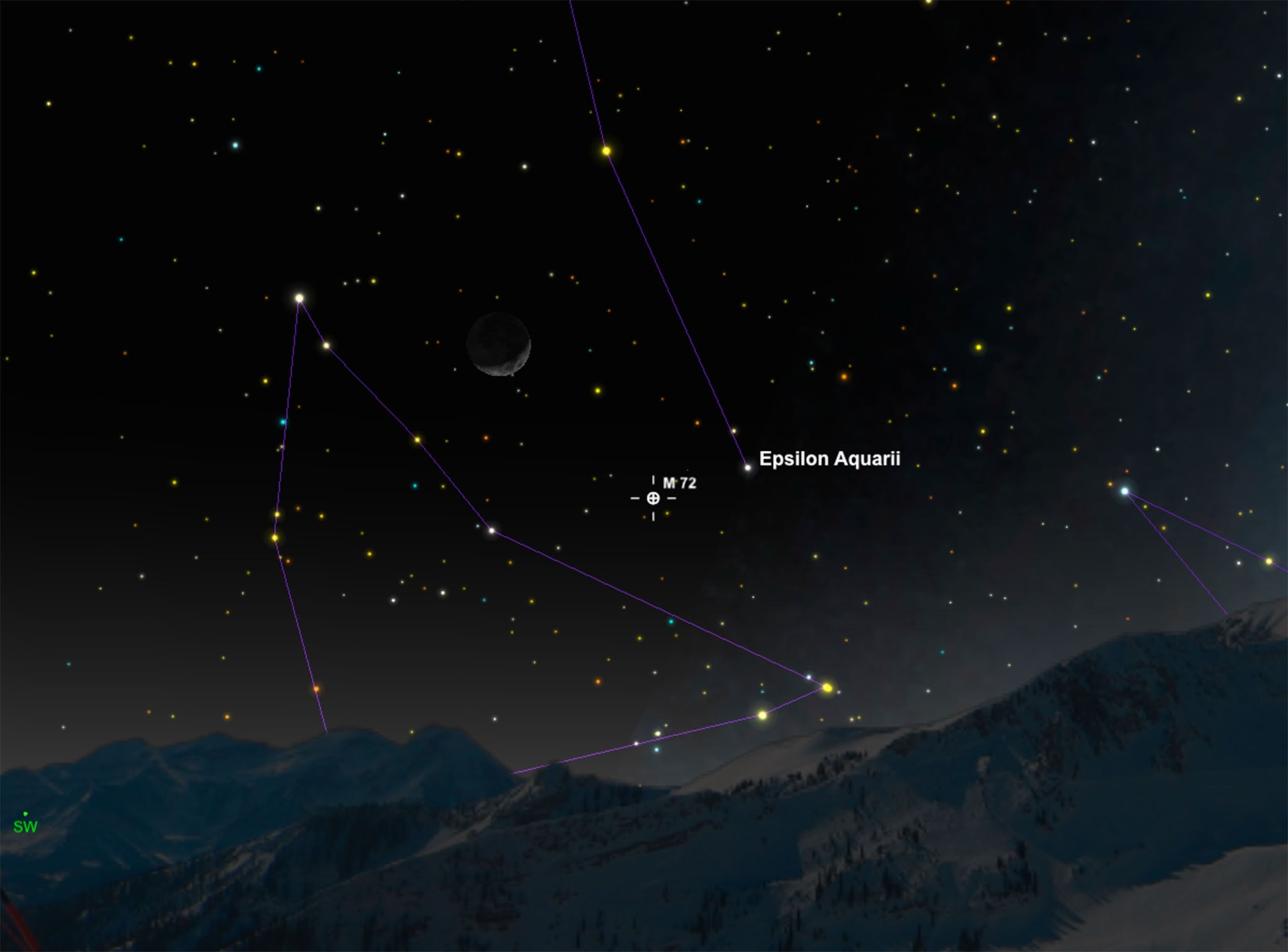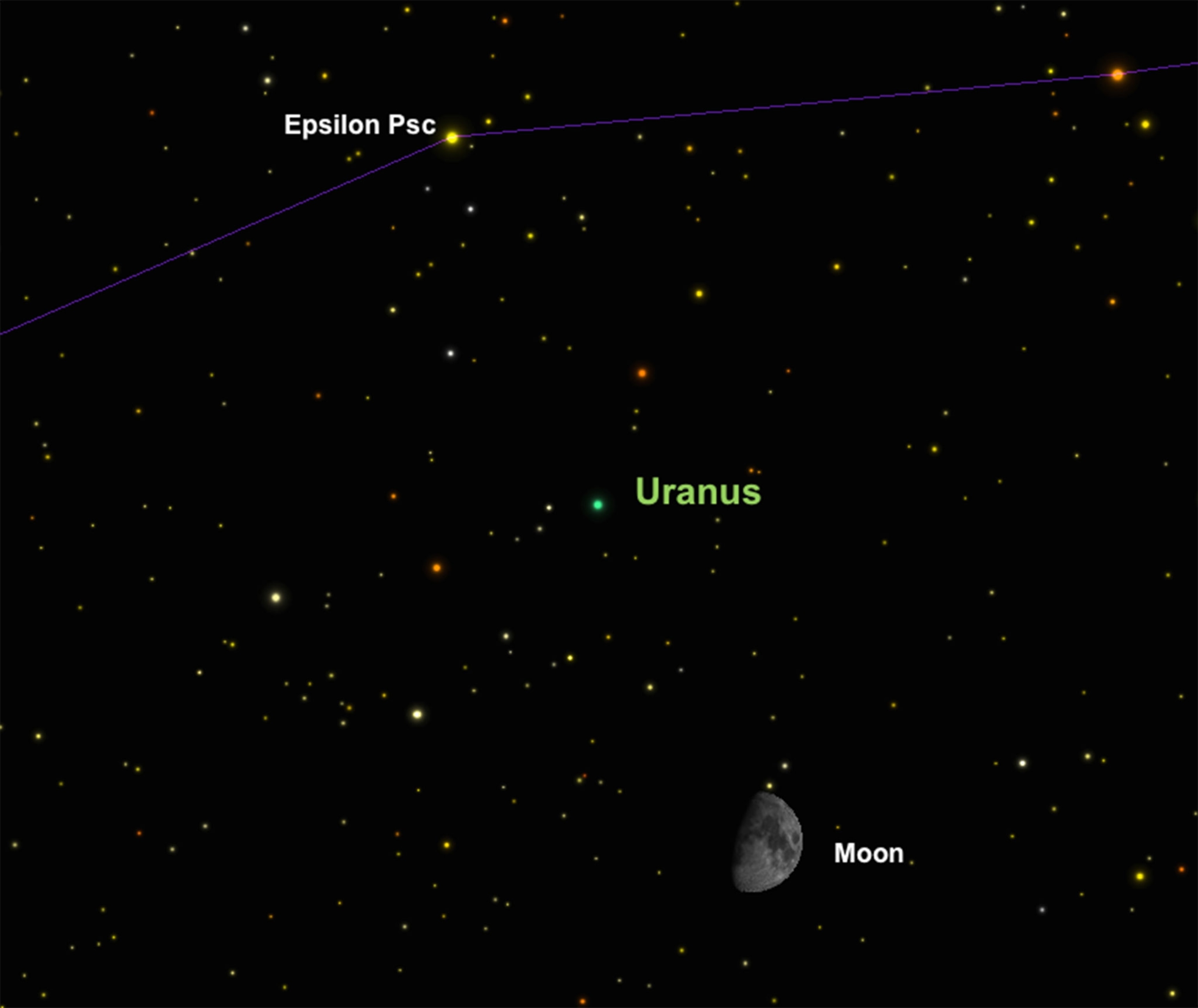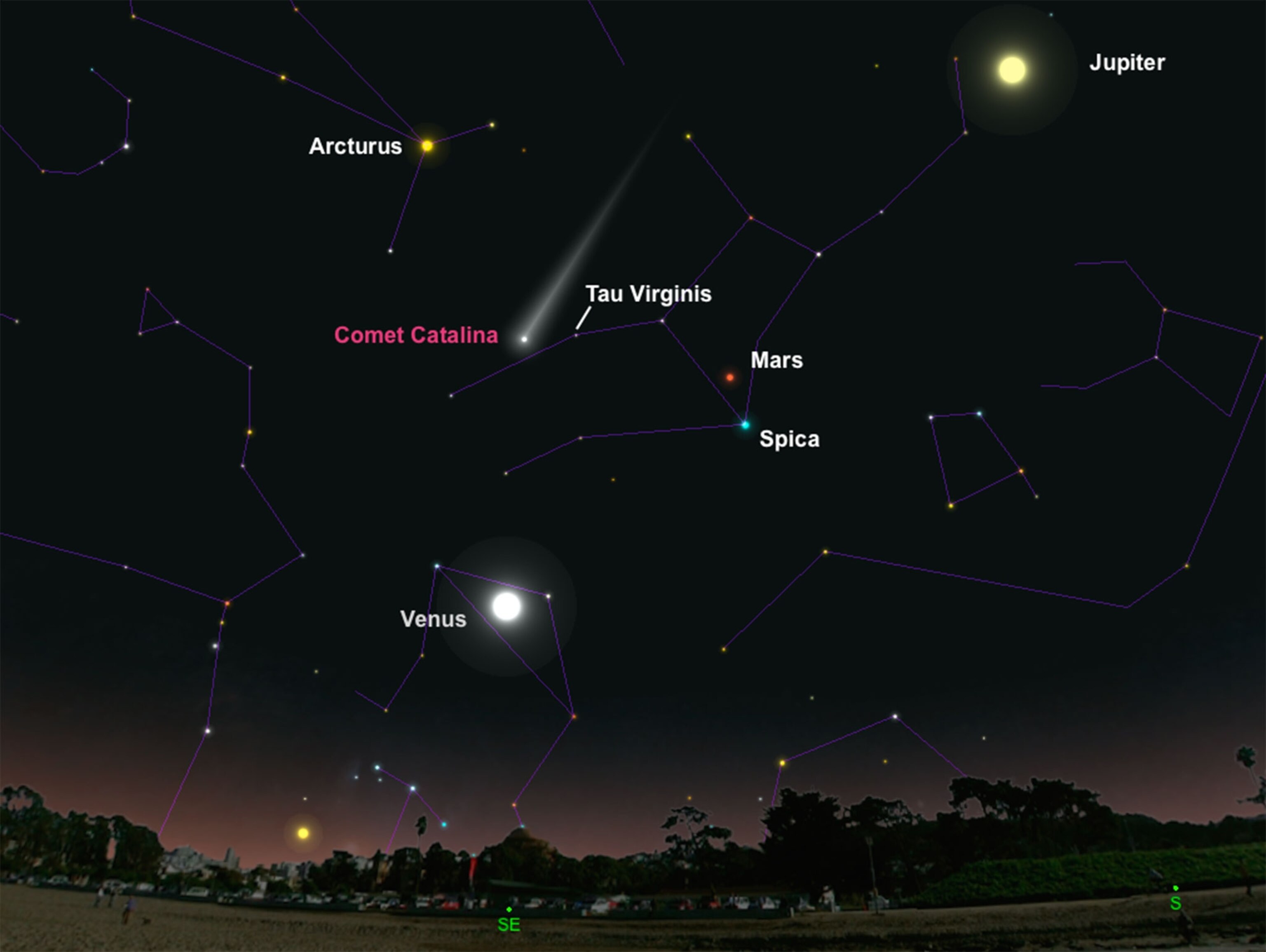
This Week’s Night Sky: Meteors, Comet, and a Snow Globe
You can still catch the Geminid meteor shower, a ball of stars, or a glimpse of greenish Uranus.
Geminids Peak. For a second night in a row on Monday, December 14, the annual Geminid meteor shower continues to peak in the overnight hours into Tuesday pre-dawn hours.
(See our viewing guide to the Geminids.)
The best views will be from the dark countryside, far from city lights, where you can see up to 100 shooting stars visible per hour. From suburbs, these numbers are expected to drop to 20 to 60 meteors per hour, depending on local light-pollution levels. But even in light-polluted urban centers across the Northern Hemisphere, the brightest meteors, called fireballs, should be easily visible.
Even you get clouded out Monday night, the Geminids should be visible well into the end of the week, though with more modest rates of shooting stars per hour. And with mostly moonless nights this week, there promise to be plenty of meteors visible—as long as you have clear skies.
In the meantime, check out some of the amazing Geminids photos that folks are posting online.
Aquarian Cluster. On the evening of Tuesday, December 15, look for the thin crescent moon to help guide you to the faint picturesque globular star cluster Messier 72.
Located in the constellation Aquarius, M72 is a ball-shaped group of thousands of stars that spans some 98 light-years across and sits a whopping 56,400 light years from Earth. This extreme distance means that it is not only one of the farthest globulars visible in the Milky Way galaxy, but also the faintest one in the Messier catalog.

The two celestial objects will be only seven degrees apart—less than the width of your fist at arm’s length. The pair will be about four degree east—width of your two fingers at arm’s length—of the 3.8 magnitude star Epsilon Aquarii.
At magnitude 9.2, M72 can barely be glimpsed with binoculars, but is best viewed through a telescope with at least a four-inch mirror under high magnification.
Comet Catalina. Early risers can continue to catch the pre-dawn comet show playing out in the eastern sky this week. On Sunday, December 20, hunting it down might be a bit easier as the comet passes four degrees due left of the magnitude 4 star Tau Virginis, which is just visible to the naked eye.

The comet is currently traveling through the Virgo constellation, visible to the left of the planets Venus and Mars, and is best seen about an hour before sunrise about 30 degrees above the horizon—equal to a stack of three fists held at arm’s length.
The icy visitor has brightened a bit, to magnitude 6, but is still best viewed through binoculars and telescopes. Will it continue to brighten? No one knows at this point, but stay tuned for updates.
Green Giant Encounter. After nightfall on Saturday, December 19, the waxing gibbous moon will be parked next to the planet Uranus.

Look for the green-hued ice giant less than two degrees above the the moon: equal to about four lunar disks apart. Also the moon, Uranus and the faint (4.2 magnitude) star Epsilon Piscium will form a straight line, with the planet nearly exactly in middle.
Shining at magnitude 5.8 magnitude, Uranus is best spotted using at least binoculars, through which it appears as a distinct but tiny greenish colored disk against a backdrop of faint stars of the constellation Pisces, the fishes.
Clear skies!
Follow Andrew Fazekas, the Night Sky Guy, on Twitter, Facebook, and his website.





